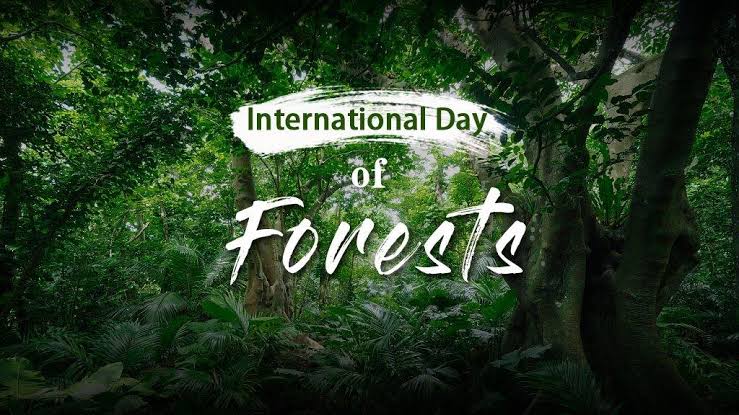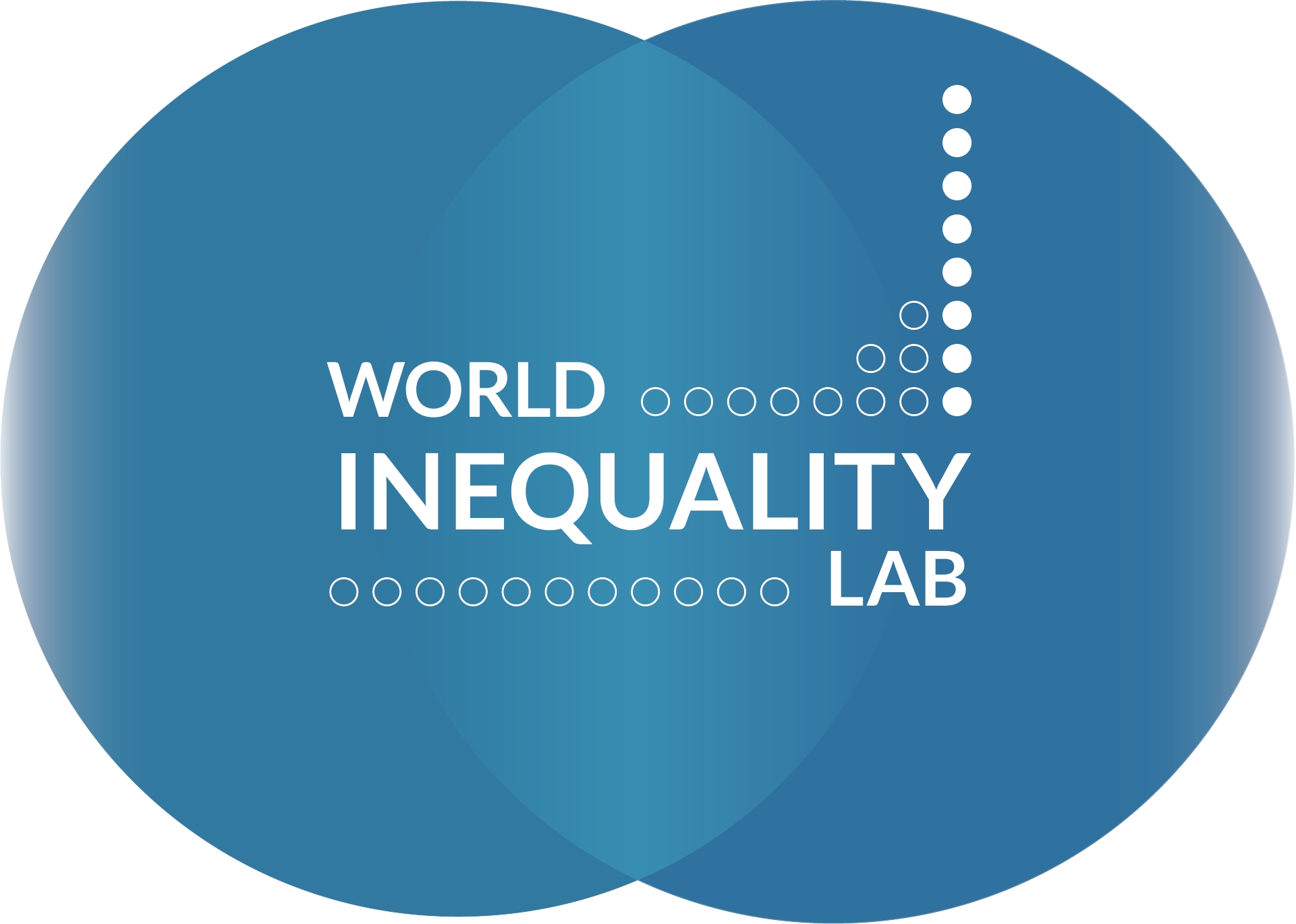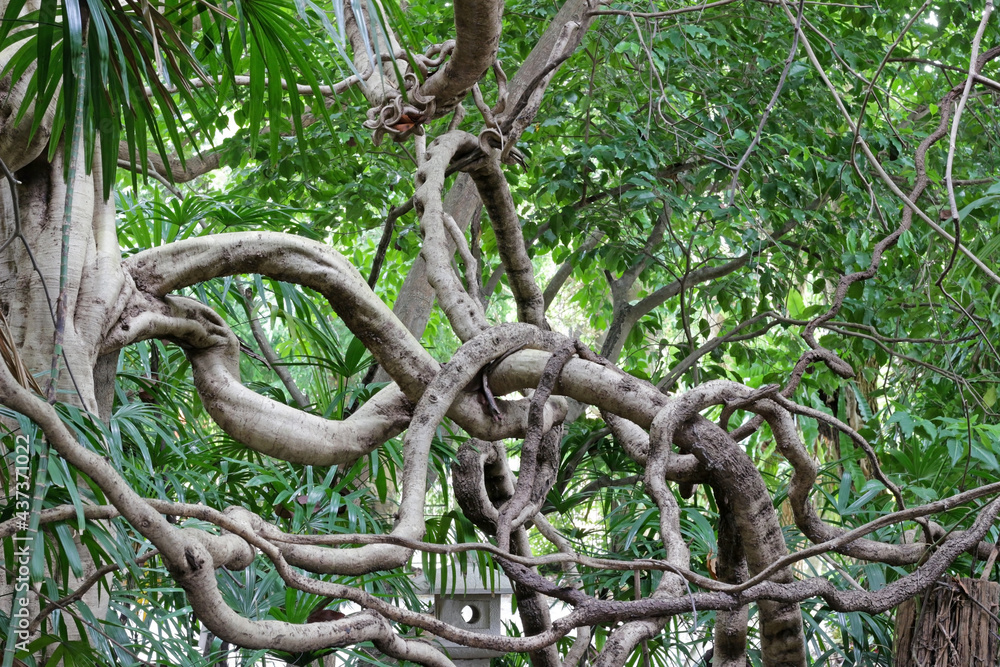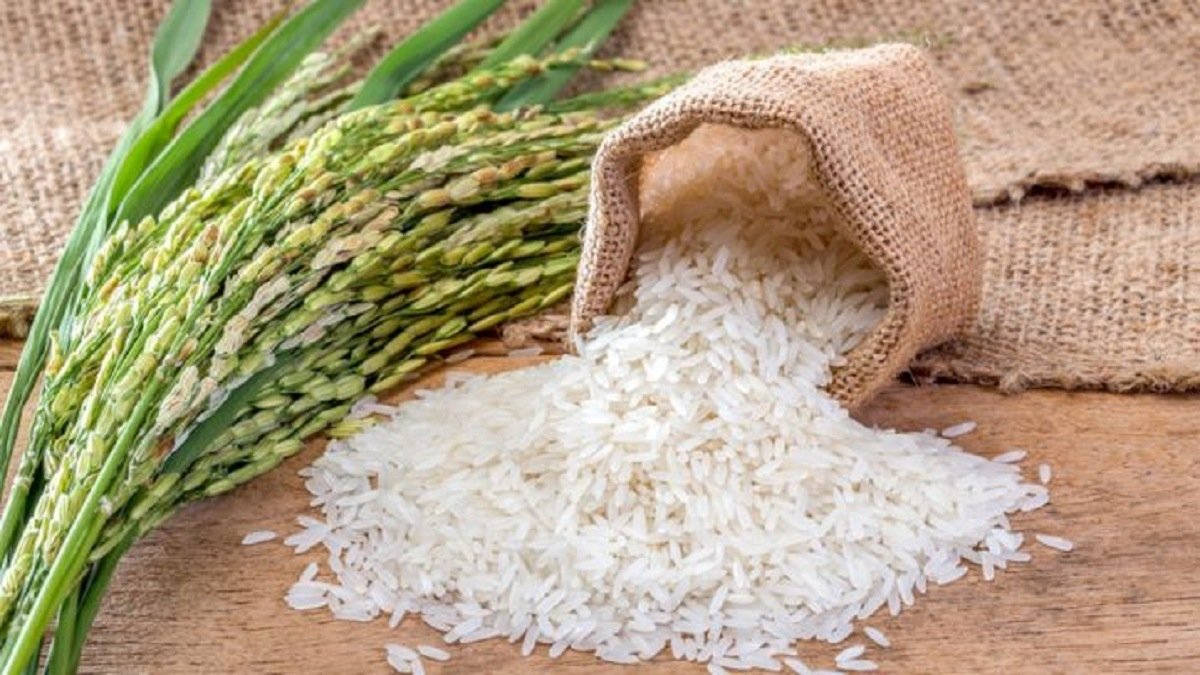International Day of Forests 2024

- 21 Mar 2024
Why is it in the News?
On March 21, 2024, people around the world celebrate World Forest Day. It's a day to remind everyone about how important forests are and all the good things they do for us.
About World Forest Day:
- World Forestry Day, also known as International Day of Forests, is celebrated on March 21 each year.
- The day aims to promote the sustainable management, conservation, and development of all types of forests for the benefit of current and future generations.
The theme for International Day of Forests 2024:
- This year's theme, "Forests and Innovation: New Solutions for a Better World" highlights the critical role of innovation and technology in protecting our forests.
- From advanced monitoring systems that track deforestation to sustainable forestry practices, innovation is key to overcoming the challenges threatening our forests.
History of International Day of Forests:
- The United Nations General Assembly announced March 21 to be the International Day of Forests in 2012.
- The day aims to respect and promote the value of a wide range of forests. Countries are encouraged to take part in regional, global, and local drives to set up a scope of forest and tree-related campaigns, like planting campaigns.
- The Food and Agriculture Organization of the United Nations (FAO) and the United Nations Forum on Forests are the coordinators of the International Day of Forests.
Importance of International Day of Forests:
- As per the UNGA, "The United Nations Forum on Forests and the Food and Agriculture Organization of the United Nations (FAO), in collaboration with Governments, the Collaborative Partnership on Forests and other relevant organizations in the field are responsible for organizing the events and campaigns related to the World Forestry Day."
- The importance of the International Day of Forests is to spread awareness and give instruction at all levels to guarantee feasible forest management and biodiversity preservation.
The Enduring Significance of Forests:
- Forests are often referred to as the "lungs of the planet" for a reason.
They play a vital role in:
- Combating Climate Change: Forests act as carbon sinks, absorbing and storing vast amounts of carbon dioxide, a major greenhouse gas.
- Protecting Biodiversity: Forests provide habitats for countless species of plants and animals, ensuring the health and balance of ecosystems.
- Providing Clean Air and Water: Forests filter air and water, regulating our climate and providing us with essential resources.
- Supporting Livelihoods: Millions of people around the world depend on forests for food, medicine, and income generation.
Celebrating and Taking Action:
- World Forestry Day is a springboard for action and we can get involved by:
- Support Organizations: Donate to or volunteer with organizations working towards forest conservation and sustainable forestry practices.
- Reduce Consumption: Make conscious choices to reduce consumption of paper and wood products, minimizing environmental footprint.
- Plant a Tree: Plant a tree in our community or support tree-planting initiatives.
- Spread Awareness: Educate ourselves and others about the importance of forests and the threats they face.
- By taking action, big or small, we can all contribute to a future where our forests continue to thrive, ensuring a healthier planet for generations to come.
World Inequality Lab Report

- 21 Mar 2024
Why is it in the News?
India’s top 1 percent income and wealth shares have reached historical highs and are among the very highest in the world, according to a paper released by World Inequality Lab.
What is the World Inequality Lab?
- The World Inequality Lab is a global research center that focuses on studying inequality and public policies that promote social, economic, and environmental justice.
The lab's main missions include:
- Expanding the World Inequality Database: The lab gathers and analyzes data on income, wealth, and capital asset distribution across various countries.
- Publishing research: The lab releases working papers, reports, and methodological handbooks to contribute to the understanding of global inequality dynamics.
- Collaborating with international researchers: The lab works with a network of researchers from around the world to compile and analyze data for the World Inequality Database.
- Promoting public debate: The lab aims to raise awareness about inequality by disseminating their findings and engaging in public discourse.
- The World Inequality Lab is known for producing the World Inequality Report, which offers up-to-date and comprehensive data on different aspects of inequality globally, including wealth, income, gender, and ecological inequality.
Key Insights from the Research Paper Released by the WIL:
- A team of four economists, including Nitin Kumar Bharti, Lucas Chancel, Thomas Piketty, and Anmol Somanchi, has compiled comprehensive time series data on income and wealth inequality in India.
- Titled "The Billionaire Raj," the paper asserts that India's current level of inequality surpasses that of the British Raj era.
- In the fiscal year 2022-23, India witnessed its highest recorded levels of income and wealth concentration among the top 1%: 22.6% and 40.1%, respectively.
- India's top 1% income share is noted to be among the highest globally, even surpassing countries like South Africa, Brazil, and the US.
- While India's top 1% holds a significant share of income, the wealth share of this segment is comparatively lower than in South Africa and Brazil.
- The paper accentuates the stark disparities among various income groups in India.
- For instance, the wealthiest 1% possess an average wealth of Rs 5.4 crore, 40 times the national average, whereas the bottom 50% and the middle 40% hold significantly lower amounts: Rs 1.7 lakh (0.1 times the national average) and Rs 9.6 lakh (0.7 times the national average), respectively.
- At the pinnacle of the wealth distribution, approximately 10,000 individuals out of 92 million Indian adults possess an average wealth of Rs 2,260 crore, a staggering 16,763 times the average Indian wealth.
Key Recommendations from the Research Paper:
- The research paper has meticulously compiled data from various sources to construct its estimates on income and wealth inequality.
- Given the absence of official income estimates and wealth statistics based on surveys in India, the paper underscores the necessity for reliable data sources in these domains.
- To tackle the issue of inequality in India, the paper proposes a range of policy interventions.
- These measures encompass a comprehensive overhaul of the tax structure to encompass both income and wealth considerations, alongside substantial public investments in critical areas such as healthcare, education, and nutrition.
- A notable suggestion outlined in the report is the implementation of a "super tax" of 2% on the net wealth of the 167 wealthiest families recorded in 2022-23. This levy is projected to generate revenues equivalent to 0.5% of the national income.
- Furthermore, the imposition of such a tax is envisaged not only to create fiscal leeway for essential investments but also to serve as an effective tool in combatting entrenched inequality within the society.
Project GR00T

- 21 Mar 2024
Why is it in the News?
AI chip leader Nvidia on Tuesday (March 19) announced Project GR00T or Generalist Robot 00 Technology, which promises to revolutionize the evolution of humanoid robots.
What is Project GR00T?
- Project GR00T stands for Generalist Robot 00 Technology.
- It is essentially a general-purpose foundation model for humanoid robots.
- This ambitious project aims to create a general-purpose foundation model for humanoid robots, enabling them to understand natural language, learn new skills from observing humans, and solve various tasks in real-time.
- Robots built on this platform are designed to understand natural language and emulate movements by observing human actions, such as instantly learning coordination, dexterity, and other skills.
- This can help the robots navigate and engage with the real world around them.
- The goal of Project GR00T is to advance the field of embodied artificial general intelligence (AGI) and drive breakthroughs in robotics.
- NVIDIA intends to leverage its expertise in AI and its technological resources to develop this foundational model, which would provide humanoid robots with human-like abilities, such as emotion, reaction, and movement.
The Potential Consequences of Project GR00T and Humanoid Robots in the Workforce:
- As humanoid robots, such as those envisioned by NVIDIA's Project GR00T, become more advanced and capable of handling various hazardous or repetitive tasks, concerns arise over potential job displacement.
- For instance, Nvidia's partnership with Hippocratic AI to develop AI-powered healthcare agents may lead to a reduction in the demand for nurses.
- However, proponents argue that these robots can serve as valuable aids for humans, enhancing their quality of life and complementing their skills rather than supplanting them entirely.
- Consequently, the impact of humanoid robots on the workforce may ultimately depend on their successful integration into existing labor structures, as well as the willingness and ability of society to adapt to this transformative technology.
Lianas and its Impact on Forest Ecosystem

- 21 Mar 2024
Why is it in the News?
Amidst escalating global temperatures, a pioneering study spearheaded by the University of the Sunshine Coast, Australia, sheds light on an unexpected threat posed by Lianas.
What are Lianas?
- Lianas are long-stemmed, woody vines that have their roots in the ground but use the trunks and branches of trees to climb their way up toward the canopy in order to reach sunlight.
- The term “liana” applies more to this type of lifestyle than to any specific family of plants, as lianas come from a variety of different taxonomic groups.
- They are found in tropical forests all over the world.
- These plants have developed a unique climbing strategy to reach the forest canopy and maximize their access to sunlight for photosynthesis.
- Their flexible stems, adventitious roots, and specialized structures such as tendrils and hooks allow them to twist, twine, and ascend the trunks and branches of trees.
How do Lianas Impact the Forest Ecosystem?
- Lianas can have both positive and negative influences on forest ecosystems, depending on their abundance and the specific environmental context.
Positive Impacts of Lianas on Forests:
- Biodiversity: Lianas enhance forest biodiversity by creating additional habitats, providing food resources, and supporting the life cycles of numerous organisms.
- Insects, birds, mammals, and even some epiphytic plants rely on lianas for food, shelter, and reproductive sites.
- Nutrient Cycling: Lianas play a crucial role in nutrient cycling within forests. By absorbing nutrients from the forest floor and transferring them to the canopy through their stems, lianas facilitate nutrient exchange between different vertical layers of the forest.
Negative Impacts of Lianas on Forests:
- Competition for Resources: High densities of lianas can lead to competition with trees for essential resources like light, water, and nutrients.
- This competition may impede tree growth, reduce seedling establishment, and hinder forest regeneration.
- Impact on Forest Structure and Stability: By increasing the likelihood of tree fall during storms or strong winds, lianas can negatively affect forest structure and composition.
- When lianas grow on tree crowns, they increase the weight and wind resistance of trees, making them more susceptible to uprooting.
- Economic Implications: Lianas can also impact the growth and reproduction of commercially valuable tree species, which has economic implications for forest management and timber production.
- Moreover, liana-infested trees often have reduced timber quality due to distortions in the tree trunk and branches.
- Low Carbon Sequestration: Their lower carbon sequestering capacity compared to trees further exacerbates the threat to carbon storage.
Pusa Basmati Rice

- 21 Mar 2024
Why is it in the News?
Even as basmati rice exports from the country are poised to scale a new high, scientists at the Indian Agricultural Research Institute (IARI) have red-flagged the “illegal” cultivation of its blockbuster varieties in Pakistan.
Unauthorized Cultivation and Export of Pusa Basmati Rice Varieties in Pakistan:
- Despite being officially registered and protected Indian varieties, several IARI-bred Basmati rice varieties, such as Pusa Basmati 1121, Pusa Basmati-6, and Pusa Basmati 1509, are being illegally cultivated and marketed in Pakistan.
- Recent YouTube videos even feature newer IARI varieties like Pusa Basmati-1847, PB-1885, and PB-1886, released in late 2021.
- Pakistan's unauthorized Basmati exports have been substantial, with 7.58 lt ($694.55 million) in 2021-22 and 5.95 lt ($650.42 million) in 2022-23 (July-June).
- This growth is partly due to the depreciation of the Pakistani rupee, allowing the country to offer lower export prices than India.
- The proliferation of these protected varieties in Pakistan can be attributed to the ease of seed multiplication.
- With just a small quantity of seeds, large-scale cultivation can be established within two years of the variety's release in India.
- This unauthorized cultivation not only undermines India's intellectual property rights but also impacts the competitiveness of India's Basmati rice exports in the global market.
What is the Basmati Crop Improvement Program?
- The Basmati Crop Improvement Program focuses on refining the unique qualities of Basmati rice, such as its distinct grain characteristics, cooking properties, and pleasing aroma.
- IARI has played a crucial role in the genetic enhancement, leading to the development of high-yielding, semi-dwarf, and photo-insensitive Basmati varieties like Pusa Basmati 1.
- These improvements have significantly reduced the crop duration from 160 to 120 days and increased productivity from 2.5 to 6-8 tons per hectare.
- As a result, these advanced Basmati varieties account for approximately 90% of India's projected $5.5 billion exports in 2023-24.
- This achievement contributes to substantial foreign exchange earnings and economic growth for the country.
Key Features of IARI-Developed Basmati Rice Varieties:
- IARI has cultivated various Basmati rice varieties with distinct characteristics, including:
- Pusa Basmati 1121: Known as the world's longest Basmati rice, it matures in 145 days with an average yield of 45 q/ha.
- Pusa Basmati 1509: Derived from Pusa 1121 x Pusa 1301, this variety addresses Pusa Basmati 1121's weaknesses, matures in 115 days, and yields 5 tons/ha.
- Improved Pusa Basmati 1 (Pusa 1460): This variety, the first product of molecular breeding in Indian rice, is an enhanced Pusa Basmati 1 with bacterial leaf blight resistance.
- Pusa Basmati 6 (Pusa 1401): Offering superior grain quality, this variety improves upon Pusa 1121's yielding ability, agronomy, and cooking quality.
- Pusa RH10: The world's first superfine grain aromatic rice hybrid, it was released in 2001 for commercial cultivation in specific irrigated ecosystems.
Registration and Cultivation Areas of Pusa Basmati Rice in India:
- All Pusa Basmati rice varieties are officially recognized under the Seeds Act 1966 and can be cultivated within the designated Geographical Indication (GI) area of Basmati rice in India, encompassing seven northern states.
- These varieties are further registered under the Protection of Plant Varieties and Farmers' Rights Act 2001, which permits only Indian farmers to sow, save, re-sow, exchange, or share the seeds of protected/registered varieties.
